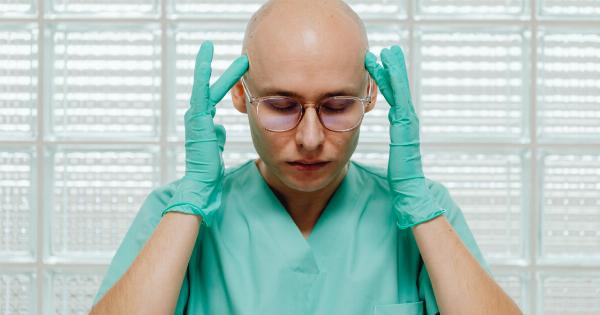Cluster headaches are intense, excruciating headaches that commonly occur in cyclical patterns or clusters.
They are often characterized by severe pain on one side of the head, typically accompanied by congestion, redness and watering of the eyes, and nasal congestion.
Cause 1: Genetic Predisposition
Research suggests that there may be a genetic component to cluster headaches. Individuals with a family history of cluster headaches are more likely to develop them. Specific gene mutations may contribute to the development of this condition.
Cause 2: Hypothalamus Dysfunction
The hypothalamus, a small area in the brain, is responsible for regulating various bodily processes, including the sleep-wake cycle and body temperature. Dysfunction in the hypothalamus may play a role in triggering cluster headaches.
The exact mechanisms are not fully understood, but it is believed that the hypothalamus becomes overactive during headache episodes.
Cause 3: Trigeminal Autonomic Cephalalgia (TAC) Disorders
Cluster headaches are classified as a type of trigeminal autonomic cephalalgia (TAC) disorder.
Other TAC disorders, such as paroxysmal hemicrania and SUNCT (short-lasting unilateral neuralgiform headache attacks with conjunctival injection and tearing), share similar characteristics with cluster headaches. It is important to differentiate these conditions to provide appropriate treatment.
Cause 4: Triggers
Various triggers can initiate cluster headache episodes. These triggers can vary among individuals but commonly include alcohol consumption, cigarette smoking, certain foods (e.g., chocolate), strong odors, and changes in sleep patterns.
Identifying and avoiding triggers can help reduce the frequency and severity of cluster headaches.
Cause 5: Neurovascular Dysfunction
Neurovascular dysfunction refers to the abnormal interactions between the nerves and blood vessels in the brain.
In cluster headaches, there is evidence of increased activity in the trigeminal nerve, which supplies sensation to the face and controls blood flow in the brain’s blood vessels. Disruptions in this interaction may contribute to the development of cluster headaches.
Cause 6: Hormonal Imbalances
Some evidence suggests that hormonal imbalances, such as changes in estrogen levels, may contribute to the development of cluster headaches.
These imbalances can occur during certain phases of a woman’s menstrual cycle or when taking hormone replacement therapy. The precise mechanisms linking hormonal changes to cluster headaches are still being studied.
Symptoms
Cluster headaches have distinct symptoms that set them apart from other types of headaches. These include:.
- Severe, excruciating pain on one side of the head
- Pain radiating behind or around the eye
- Redness and watering of the eye on the affected side
- Nasal congestion and runny nose
- Restlessness or agitation during headache episodes
- Sensitivity to light and sound
Treatment Options
While there is no cure for cluster headaches, several treatment options aim to alleviate symptoms and reduce the frequency of episodes. These include:.
- Acute medications: Triptans, high-flow oxygen therapy, and local anesthetics can provide relief during headache episodes.
- Preventive medications: Calcium channel blockers, corticosteroids, and anti-seizure medications may be prescribed to reduce the frequency of cluster headaches.
- Nerve stimulation: Occipital nerve stimulation and deep brain stimulation are emerging therapies that involve the use of electrical impulses to modulate nerve activity and reduce headache intensity.
- Lifestyle modifications: Avoiding triggers, maintaining a consistent sleep schedule, and managing stress can help prevent cluster headaches.
Conclusion
Understanding the causes of cluster headaches is crucial for effective management and treatment.
Genetic predisposition, hypothalamus dysfunction, TAC disorders, triggers, neurovascular dysfunction, and hormonal imbalances are all factors that may contribute to the development of cluster headaches. By identifying these causes, individuals can work closely with healthcare professionals to explore treatment options and adopt lifestyle changes to mitigate the impact of these debilitating headaches.


























